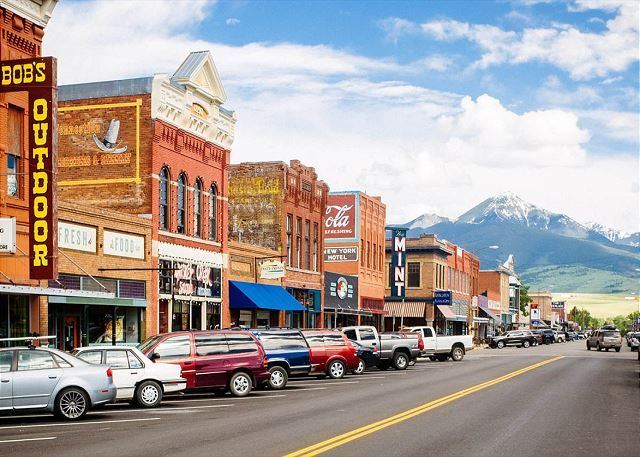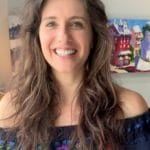
"It is not beauty that endures, it is love that makes us see beauty." - Leo Tolstoy
In 2010, I sold my beautiful 1908 Craftsman home in a small railroad town in Montana – a home with 'good bones,' a yard full of mud and dog poop, urine stained hardwood floors, and an unfinished second story – that we resurrected with sweat and creativity from a few years of neglect.
This was a home that I declared with the innocence of one who has never remodeled a home – let alone a 100 year old home – “Oh, it doesn't need that much work,” and then spent months and months painting every room, finishing the second story, adding a second bathroom, carving out a family room in the basement, refinishing the floors, and laying sod in the yard.
I became the sweat in sweat equity.
This was the home with the trampoline that we dug out of the soil, sinking it into the earth so that the trampoline was level with the ground – the perfect place for summer slumber parties and to practice flips without fear.
This was the home where we climbed out the second story bathroom window and onto the roof to watch the fireworks after watching the rodeo with our friends Mick and Diz on the 4th of July. That same window is how our sweet cat, Rosie, let herself in and out of the house, her personal cat door. In the winter, she would sit outside the window and mewl plaintively, and then let out an irritated “Meow!” when we finally heard her and let her in.
When we sold the house, the window screen was stacked in a corner of the garage – we'd never put it back in. Each time I drive by the home today, that bathroom window is still screenless. It makes me smile.
This was the home where I made – and later birthed – my youngest child in the queen bed in the upstairs bedroom, where his older brother and sisters and I huddled around his newly born body, changing his first diaper in the wee hours of a November morning.
This was the home where my daughters walked to and from school, and rode their bikes across the small town – to the pool in the summer, to the park for soccer practice, to the library for books, to the gas station for candy, the thrift store for treasures.
This was the home where my friend Rob would swing by in the late afternoons, to see if I was home and we could play a game of cribbage. He'd bring bags of dried cranberries from the health food store around the corner and hand them out to my kids.
This was the home where my husband dug out a sandbox for our children, and then used the dirt to build a sloping hill that he would walk down on his hands. Next to the sandbox, we planted sunflowers and Russian sage, wildflowers and herbs between river rocks from the banks of the Yellowstone. Our children wove fairy gardens in between the rocks, and somehow, my good pair of white kitchen scissors never made it back to their drawer.
They are probably buried somewhere, between the stones.
This was the house where I'd pick up a basket and walk the two blocks to the health food store where my friend Annie was the manager. On days when I felt at my wit's end – with marriage or motherhood or life – Annie would tell me stories from her own motherhood and from her own marriage, and I would sip the scent of courage again.
This was the house where I drove my children in my teal Jeep and then my silver minivan up the hill - one child after another, for 10 years - to my friend Maureen's Montessori school, where I wanted to tuck myself inside her lessons and the classroom, lit with warm sunlight. She was not just their teacher, but also mine.
This was the house where my mother came to help when I couldn't pick out another paint color or stomach one more trip to Home Depot or the lumber yard. She and I painted the kitchen cabinets together, laughing and feeling a bit silly from paint fumes. She chose the colors for the kitchen – butter yellow cabinets, white beadboard, a dark gray navy for the wood trim, and pale aqua for the walls and ceiling – that became my favorite room and favorite colors in the house. When I think of kitchens today, I remember that room, and my mother coming to help when I needed her, and I feel swaddled like an infant, tucked and warm.
This was the house where my friend Jen and her children would surprise us each May Day with a May basket on the front porch – warm muffins, paper flowers, crafted by her kids, and seeds for planting.
I'm told this house is still known as the Pitman house by our neighbors. She bears the dark green paint we adorned her with, with the dark brown and tan trim. The front porch still beckons.
Jeanie and Bill still live across the street, and we stop by to see them each time we make it back to Montana. Bill, a veteran carpenter, built my second story, the kitchen cabinets to match the original cabinets that still hung on the eastern wall, and traded books and philosophy with me. It was Bill who told me once, “Don't be afraid to pray for what you most wish for.”
Jeanie – the head of the county drug and alcohol rehabilitation center – was my first counselor, and my first attentive witness to my eating disorders. She said yes without batting an eye when I asked her, “If my drug of choice is food, can I still come and see you?”
In the short, hot months of summer, Jeanie would give my children popsicles from her front porch, and was the first to let me know if one of them was riding their bike on the street.
When I sold that house, I cried. I cried like I was selling a part of my own body, hacking off a limb.
Montana was both a cradle and a crucible – a place of village and community, and because of its dark, fierce long winters, the worst place for me to live with chronic winter depression.
At some point – despite the trampoline in the yard, grandparents in the valley, and aunties in the next town; despite Sunday dinners and countless teas with Susie and Papa; despite the yoga class down the street, where I would walk the five blocks to breathe with my friend Karen and my neighbors – despite 13 years of village making and a town where I'd carved nearly every street with my family on a caravan of bikes, one, two, three, four, five, a bike trailer and a dog on a leash – I could not stay.
I could not do one more winter.
And so we sold our house. We boxed up a dozen years of living, dug out the trampoline, and sorted the toys to donate and to keep.
When the house was empty, I walked through each room, saying, thank you, thank you. I held the walls with my arms, hugging and crying, and found the closet where my kids had written their names inside.
My friend Cara came over to help me clean the house. Together, we wiped down the walls, cleaned the cabinets, and washed the floors. It felt like preparing a body for burial, this sacred cleansing. My husband wondered if he'd have to pry me away, like Scarlett O' Hara leaving Tara.
When I finally handed over the key, I wanted to say to the next owner: take good care of her. Make your own memories here. Please know what a treasure you've been given.
And isn't that what we all want, when we let go of something we love, but that we can no longer own, or keep, or care for? That the next person who stewards the land, or the house, or a child, will care for it with all that they are, and all that they have?
I live in Texas now, where I've traded mountains and big skies and aspen trees for sun and heat and live oaks. It is true that the weather in Texas is a balm to the winter depression, and that my body thrives with sun in the way a long winter drains me.
And yet I still feel an ache between my shoulder blades when I drive by my old house in Montana. The corner of F and Callender bears the imprint of love, and I can't say whether it is grief, or gratitude, or both that I feel when I take in that dark green house and the faded wooden fence.
During the pandemic, we tore up most of our small Texas backyard to make raised beds, where we now grow greens, watermelon, and cucumbers, and feel awe about harvesting tomatoes and peppers and spinach in November and even into December – something we could never do in Montana.
We planted lavender and two peach trees that were given to me by my neighbor. We made a bed of flowers in the front yard, where we planted a rosemary bush, zinnias that another neighbor gave us, echinacea and Russian sage.
When I take the dogs for a walk, I run my hands through the Russian sage, like I run my hands through my children's hair, bring the scent up to my face and inhale those long ago memories – a green Craftsman house, the collection of bikes in the driveway, a trampoline, sunk in the ground, and the warm bread of their childhood.
It feeds me still.
